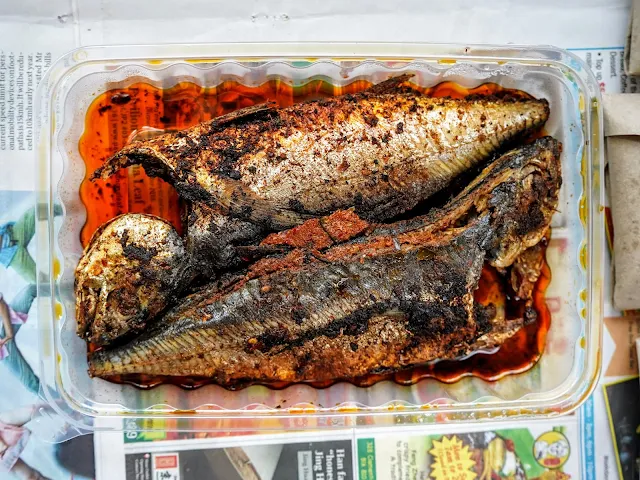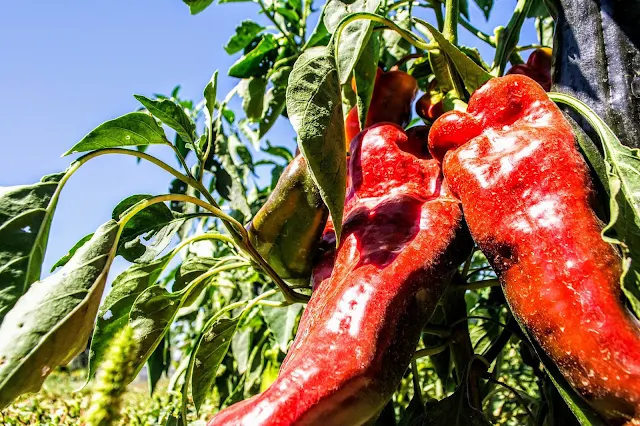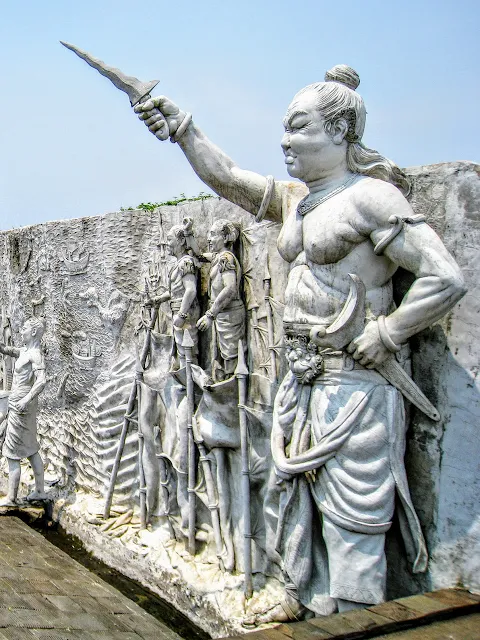Long before the Europeans showed up in south America, the locals have been enjoying chili peppers since time immemorial - 8,000 years ago according to some sources.
From south America, the Portuguese brought chili pepper to their African colonies including Mozambique and Angola. Peri-peri is the Swahili word for chili pepper, hence we have peri-peri chicken today which is a Portuguese dish originally from Mozambique.
From Africa, next stop India. The Portuguese brought chilis to India where Vasco da Gama earlier landed in 1498, near Calicut on the Malabar coast. From then on, chili pepper gradually became indispensable to Indian cuisine adding heat to the formidable local arsenal of cardamon, nutmeg, turmeric, cinnamon, etc
From their base in India, the Portuguese captured Malacca in 1511. And so,
chili pepper arrived in the Malay peninsula and the fiery spice conquered Malay /
Indonesian cuisine.
The Spanish followed, arriving in Cebu in the Philippines in 1555 and
brought them under the spell of chili pepper as well.
However, by the time the
Portuguese and Spaniards brought chili pepper to the Malay world in the 1500s, China's Ming dynasty had long withdrawn from its maritime interests and made private sea trade illegal. It was the vacuum created by the Ming dynasty following the death of Admiral Cheng Ho in 1433 that opened the door to Europeans in maritime Southeast Asia.
Today, we cannot imagine the Korean icon kimchi without chili. Here too, the Koreans did not have chili peppers until the Portuguese brought the spice to them in the 1500s. Chili was added to kimchi since then but did not become popular until the 1800s. Today, chili pepper is a definitive ingredient of kimchi and found its way into many Korean dishes including gamjatang.
Though a late comer, chili found its way into almost every dish in maritime southeast Asia either as an ingredient or condiment. Chili crab is considered one of Singapore's national dishes along with chicken rice.
And, what is Indonesian cuisine without sambal?! There are some 300 different types of chili dips (sambal) for different dishes in Indonesia 😮 Yes, in Indonesia, they have a different chili dip for different dishes.
Malaysia's national dish nasi lemak in its most basic (to me most delicious) form is simply rice boiled with coconut milk eaten with sambal which main ingredient is chili pepper 🌶
Oh yeah, next time you want to ask your European friends in a well meaning way "Do you take spicy?", remember it was the Portuguese who gifted us chili pepper and Devil's curry 🌶
If Europeans taught us how to eat chili pepper, how come most of them are not as into spicy food as we are now? What is your insight on this question? 🤔 Please share in the comments 🙏
Written by Tony Boey on 15 Jun 2021
References:
Image of spicy fish courtesy of
flickr. Image of Aztecs courtesy of Wikipedia. Image of peri-peri chicken courtesy of Wikipedia. Image of Vasco da Gama's meeting with king of Kozhikode in Calicut
courtesy of
Wikipedia. Image of spicy chicken courtesy of Wikipedia. Image of junk courtesy of National Archives of Singapore. Image of Christopher Columbus courtesy of
Wikipedia. Image of Majapahit warrior courtesy of Wikipedia. Image of chili pepper courtesy of
Wikipedia.

















i enjoy reading this kind of posts! That little girl is so cute and she seems to enjoy her spicy noodles very much! Start them young!
ReplyDelete.... I worked for many years as expatriate engineering consultant in Indonesia [a.k.a. "and love the traditional food - After much thought and research I tend to subscribe to the theory that South American Chili "Pepper" was introduced to the so-called "Spice Islands" in early colonial times by Portugese, Dutch, and English spice traders as a convenient and cheap trade goods exchange for the local indigenous true Black "Pepper" [Piper Nigrum] which was reportedly worth its weight in gold in Europe back around 16th Century - For those interested in the subject I highly recommend the book "Nathanials Nutmeg" about the battle for trade supremacy in the East Indies between the Dutch and English in the late 16th, early 17th century - See > https://www.goodreads.com/book/show/29386.Nathaniel_s_Nutmeg
ReplyDeleteThank you Peter. I think the same as you. Thanks for the recommended read. I checking it out now. Appreciate much.
Delete